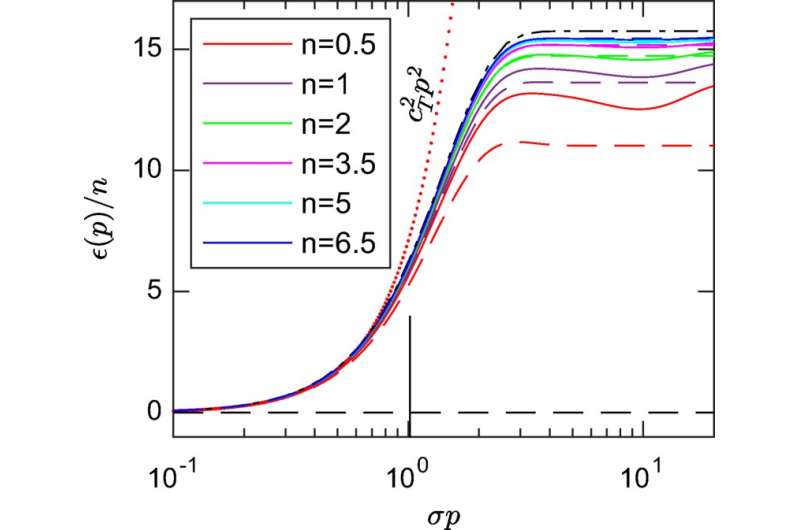Rediscovered theory solves mystery of glass's sound damping, physicists find

July 4, 2023
This article has been reviewed according to Science X's editorial process and policies. Editors have highlighted the following attributes while ensuring the content's credibility:
- fact-checked
- peer-reviewed publication
- trusted source
- proofread
by University of Konstanz
For about half a century, physicists have puzzled over vibrations in glass at low temperatures. The reason: Glass carries sound waves and vibrations differently than other solids—it 'vibrates differently.' But why? And how can the propagation of sound in glass be calculated correctly?
Two University of Konstanz physicists, Matthias Fuchs and Florian Vogel, have now found the solution—by taking up an old model, which was created about 20 years ago and was rejected by experts at the time, and reworking it. Their new view on the old theory has now been published in the journal Physical Review Letters.
If you send sound waves through glass and measure them very accurately, you will notice a certain damping of the vibrations that is absent in other solids. It has far-reaching consequences for the thermal properties of glass, such as heat transfer and heat capacities. The effect is well known in physics, but until now there was no theoretical model that could describe it correctly—and provide the framework for more complex calculations of sound propagation in glass.
Glasses are disordered solids. Unlike crystalline solids, the particles that make up glass are not regularly arranged. In most solids, the particles sit almost perfectly 'lined up,' like building blocks arranged in a precise lattice. When a wavelike vibration is excited in such crystalline solids at low temperatures, the particles pass the vibration on to their neighbors without damping. The vibration runs in a uniform wave without loss, comparable to a la-ola wave in a stadium.
Not so in glass. Its particles are not arranged in a regular lattice, but have random positions without stringent order. Oncoming oscillation waves are not carried on in a uniform pattern. Instead, the vibrations arrive at the particles' random positions and are carried forward in a correspondingly random pattern.
The result is that the uniform wave is broken and disperses into several smaller waves. This dispersion effect causes the damping. Physicist Lord Rayleigh used this mechanism of light scattering by irregularities in the atmosphere to explain the blue color of the sky, which is why this effect is called 'Rayleigh damping.'
About 20 years ago, physicists Marc Mezard, Giorgio Parisi (Nobel Prize in Physics 2021), Anthony Zee and colleagues described these anomalies in glass by a model of oscillations in random positions known as 'Euclidean random matrix approach' (ERM). 'A simple model that basically was the solution,' says Matthias Fuchs, professor of soft condensed matter theory at the University of Konstanz. However, the model still had some inconsistencies and was therefore discarded by experts—and fell into oblivion.
Matthias Fuchs and his colleague Florian Vogel took up the old model again. They found solutions to the open questions the scientific community could not answer at the time and examined the revised model by looking at its Feynman diagrams. These useful graphs were introduced by Richard Feynman in quantum field theory and revealed the regularities in the patterns of the scattered waves.
The results of Matthias Fuchs and Florian Vogel provided true-to-life calculations of the sound propagation and the damping effect in glass. 'Mezard, Parisi and Zee were correct in their insightful model—harmonic oscillations in a disordered arrangement explain the anomalies of glass at low temperatures,' Fuchs explains.
The re-discovered model, however, is far from the end of the story. 'For us, it's the starting point: We have found the right model that we can now use for further calculations, especially of quantum mechanical effects,' Matthias Fuchs says. 'Good vibrations' for research.
Journal information: Physical Review Letters
Provided by University of Konstanz




